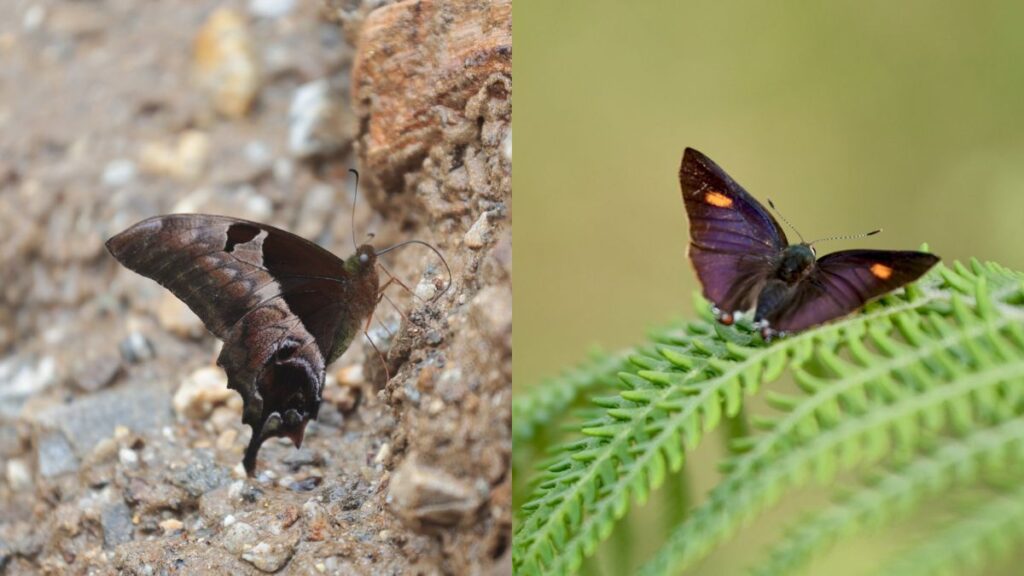Mechukha, Arunachal Pradesh | July 24, 2025
In a significant breakthrough for biodiversity research in India, two butterfly species discovered for the first time in the country — Metok Green Sapphire (Heliophorus gloria) and Medog Tufted Ace (Sebastonyma medoensis) — have been officially recorded during the First High-Altitude Butterfly and Biodiversity Meet held in Mechukha, a remote Himalayan town in Shi-Yomi district, Arunachal Pradesh, from July 19–20, 2025. These species were previously unknown within Indian borders, marking a major milestone in the study of Lepidoptera in the Eastern Himalayas.
These species, previously known only from the Hanmi–Metok region in southeast Tibet, represent new additions to India’s butterfly fauna and underscore the immense but largely uncharted ecological richness of the Eastern Himalayas.
A Milestone for Indian Lepidopterology
Butterfly researchers and naturalists described the event as a scientific milestone. The discovery not only expands India’s known butterfly diversity but also draws attention to Mechukha as a region of high conservation value.
The meet witnessed enthusiastic participation from 72 individuals, including researchers, PhD scholars, students, community leaders, and nature enthusiasts from reputed institutions such as NERIST, Tezpur University, Mizoram University, Digboi College, and ATREE. The event was organized by the Department of Tourism, Government of Arunachal Pradesh, with the aim of combining scientific exploration with community awareness.
The President of the Butterflies and Moths of Sikkim – Nature Conservation Society (BAMOS–NCS), a Limca Book of Records-recognized lepidopterist Mr. Nawang Bhutia, stated that these findings are a powerful indicator of the potential that exists in underexplored ecosystems like Mechukha. “This discovery is more than a record — it’s a gateway to understanding migration patterns, habitat specialization, and the ecological significance of Himalayan butterflies,” he noted.
Diversity Beyond Expectations
A total of 107 butterfly species were recorded during the two-day event — an extraordinary figure for a first-time meet in high-altitude terrain. The documentation included rare and charismatic species such as:
- Tiger-mimic Admiral
- Tibetan Brimstone
- Bhutan Blackvein
- Brown Gorgon
- Scarce Jester
- Three species of the elusive Jungle Queen
Each sighting contributes valuable data to ongoing studies in Indian lepidopterology, and many of the records are likely to assist in conservation planning for the fragile Himalayan ecosystem.
Chinese Rose Windmill and Prior Findings
Importantly, the elusive Chinese Rose Windmill butterfly was also recorded in Mechukha prior to the meet, on May 31, 2025. This species, too, is rare and signifies the unexplored potential of the region. The cumulative findings confirm Mechukha as a biodiversity hotspot that holds enormous potential for future scientific exploration and species monitoring.
A Community-Oriented Scientific Effort
Unlike conventional field studies, the Mechukha meet combined rigorous scientific documentation with local engagement and environmental education. The programme featured butterfly walks, biodiversity trails, aqua therapy sessions, and interactive awareness games designed to inspire grassroots eco-consciousness, particularly among local schoolchildren and community youth.
These activities served to bridge the gap between research institutions and local communities, demonstrating the value of inclusive biodiversity documentation in fostering a culture of conservation.
Mechukha: A Future Hub for Butterfly Tourism
The Mechukha valley, with its lush forested slopes, diverse microclimates, and relatively low human disturbance, presents a unique opportunity for developing eco-tourism centered around butterflies and high-altitude biodiversity.
Experts at the meet emphasized the potential for promoting butterfly tourism in the region, not only as a conservation tool but also as a source of sustainable livelihood for local communities. With proper training and infrastructure, Mechukha could become a model for responsible nature tourism in the Northeast.
“Butterfly tourism has already begun to grow in places like Sikkim and Bhutan. Mechukha, with its newly documented species and unexplored habitats, is poised to be the next frontier,” said one expert during the closing remarks.
A Broader Scientific and Conservation Imperative
The discoveries made during the biodiversity meet also underscore the urgent need for continued exploration and long-term ecological monitoring in the Eastern Himalayas. As climate change and developmental pressures reshape natural landscapes, documenting and conserving butterfly habitats becomes ever more critical.
The event highlighted that a strategic approach involving research institutions, state departments, conservation societies, and local communities can yield not only scientific insights but also scalable models of eco-friendly development.
With over 1,300 butterfly species already recorded in India, and new ones still emerging from remote terrains, this event in Mechukha serves as a powerful reminder: India’s biodiversity story is still being written, and the Eastern Himalayas may hold some of its most important chapters.
Also Read: Admission Open for B.Pharma at Sajong, Sikkim; Following Students are Selected for 2025 Batch

